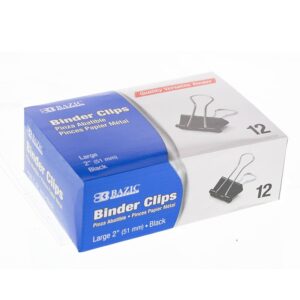How to Improve Cash Flow with Net 30 Invoicing
Cash flow, often described as the lifeblood of any business, crucially depends on the efficiency of money movements within a company. An essential component of this financial flow is invoicing, a process key to ensuring businesses get paid for their services or products.
While traditional invoicing methods can often lead to payment term ambiguity and create financial bottlenecks, Net 30 invoicing emerges as a solution promising a smoother, more predictable approach to managing cash flow.
This type of invoicing clearly lays out that customers have 30 days from the invoice date to settle their outstanding dues. a practice that adds a layer of transparency and understanding between a business and its clientele. Especially prevalent in B2B transactions, Net 30 invoice not only imbues financial dealings with professionalism but also with clarity, setting a standard that benefits both parties involved.
Understanding Net 30 Invoices
Concept and Industry Adoption
Net 30 invoicing is a powerful tool used by businesses to improve the efficiency of their cash flow. It specifies that a customer has 30 days from the invoice date to pay the outstanding balance. This practice not only fosters a transparent agreement between the business and the client but also offers a predictable, interest-free credit period.
Its adoption is especially prevalent in B2B transactions where it adds a layer of professionalism and clarity to financial dealings. By clearly defining payment expectations upfront, businesses can manage their finances more effectively and foster stronger relationships with their clients.
Distinction from Traditional Invoices
Compared to traditional invoicing methods, Net 30 invoicing stands apart primarily due to its clarity regarding payment terms. Traditional invoices often lack a specified due date, leading to unpredictability and administrative burdens for businesses.
This uncertainty can hinder a company’s ability to forecast cash flow accurately, potentially resulting in delayed payments and the need for time-consuming follow-ups and negotiations.
In contrast, Net 30 invoicing establishes clear deadlines, simplifying financial communications and minimizing the need for constant payment reminders.
Advantages of Net 30 Invoicing:
Predictable Cash Flow and Budgeting
One of the most significant advantages of Net 30 invoicing is the predictable cash flow it enables. By knowing when payments are due, businesses can accurately forecast their income, making it easier to budget, plan strategic investments, and support sustainable growth. This predictability is invaluable for maintaining a healthy financial state and ensuring that resources are allocated efficiently.
Enhanced Customer Relationships
Offering Net 30 terms can significantly improve customer relations. Clients appreciate the flexibility and convenience of a 30-day payment window, which can lead to boosted loyalty and even attract new business. This added value to the customer experience helps in building long-term relationships and supports a positive reputation in the marketplace.
Reduced Administrative Overhead
With defined payment deadlines, the need for frequent reminders and payment negotiations diminishes. This reduction in administrative overhead allows businesses to dedicate more time and resources to revenue-generating activities. By streamlining the payment process, companies can operate more efficiently and focus on growth initiatives.
Early Payment Incentives
Implementing early payment incentives, such as offering a discount for payments made within a shorter timeframe than the standard 30 days, can encourage clients to pay faster. This strategy not only accelerates cash flow but also reinforces positive payment behaviors among customers. For example, a “2/10 Net 30” incentive offers a 2% discount if paid within 10 days, benefiting both the business and its clients financially.
The implementation of Net 30 invoicing presents a strategic avenue for businesses to not only enhance their own financial health but also to improve customer satisfaction and operational efficiency.
By opting for a system that provides clear payment terms, companies can navigate the complexities of cash flow management more effectively and position themselves for success in competitive markets.
Drawbacks of Traditional Invoicing

Traditional invoicing practices, while historically rooted in business transactions, come with a set of inherent challenges that can hinder a company’s operational efficiency and financial stability.
Without clear payment terms and structured invoicing systems, businesses might face unpredictability in cash flow, elevated risks of late payments, and increased administrative burdens.
Unpredictability and Financial Risks
The most significant drawback of traditional invoicing methods lies in the realm of financial management. Vague or non-specific payment terms lead to unpredictable cash flow, making it challenging for businesses to forecast income accurately and plan for both immediate and long-term expenses.
This unpredictability can spiral into financial strain, especially for small to medium-sized enterprises that rely heavily on each payment to maintain operational liquidity.
Risks of Late Payments
Further amplifying financial challenges are the heightened risks of late payments associated with traditional invoicing. In the absence of a clearly defined due date, customers may not feel compelled to prioritize payment within a specific timeframe, consequently delaying funds that businesses may urgently need.
This situation can place companies in a precarious position, potentially affecting their ability to meet their own financial obligations on time, such as paying suppliers, fulfilling payroll commitments, or pursuing growth initiatives.
Administrative Challenges
Apart from financial implications, traditional invoicing imposes significant administrative burdens on businesses. The lack of structured payment terms often necessitates an ongoing dialogue between the business and its clients concerning invoice payment statuses.
These follow-ups and negotiations not only consume valuable time but also divert resources that could be more productively used in revenue-generating activities.
Moreover, managing a ledger of uncertain payments can complicate accounting processes, adding an unnecessary layer of complexity to financial administration.
Spotlight on Successful Net 30 Vendors
Image courtesy: Unsplash
Amid the constraints of traditional invoicing practices, several industry sectors have emerged as successful adopters of Net 30 invoicing, leveraging its benefits to secure predictable cash flow and nurture business growth.
Office and Industrial Supplies
Companies such as The CEO Creative, Uline, and Crown Office Supplies in the office supplies sector, alongside Grainger and McMaster-Carr in industrial supplies, have effectively implemented Net 30 terms.
This approach fosters stronger client relationships by providing a financial flexibility that customers appreciate, further cementing the vendor’s role as an indispensable resource for business operations.
It streamlines transactions, minimizes administrative overhead, and ensures a predictable income stream, contributing substantially to the vendor’s financial health.
Technology and General Retailers
The technology sector, with examples like Newegg Business, has seen the benefits of offering Net 30 terms to B2B clients, facilitating smoother transitions in technology upgrades and IT solutions.
Additionally, general retailers such as Amazon Business and Walmart, through programs like the Walmart Community Card. have expanded the accessibility of Net 30 terms, making it easier for businesses to manage inventory and supplies purchases while maintaining financial fluidity.
Additional Industry Sectors
Beyond office supplies and technology, a variety of industry sectors, including marketing solutions provided by companies like Creative Analytics and office essentials from Summa Office Supplies and WB Mason. have observed success with Net 30 invoicing.
This widespread adoption across industries underscores the versatility and effectiveness of Net 30 terms. In enhancing client relations, administrative efficiency, and predictable revenue streams, underscoring its value as a strategic asset for business success.
In conclusion, while traditional invoicing methods come with notable drawbacks, including financial unpredictability, risk of late payments, and administrative inefficiencies. The adoption of Net 30 invoicing across diverse sectors illustrates a proven pathway to mitigating these challenges.
By instituting clear, structured payment terms, businesses can cultivate stronger customer relationships, streamline administrative processes, and most importantly, secure a more predictable and sustained cash flow a fundamental cornerstone for long-term business success.
Spotlight on The CEO Creative

The CEO Creative is an exemplar in the realm of Net 30 invoicing, standing out for their innovative approach and commitment to creating a seamless billing experience for their B2B clients.
By offering both substantive marketing solutions alongside essential office supplies, this company harnesses the power of efficient invoicing systems to benefit not only its business operations but also its customer relationships. Let’s delve into how The CEO Creative is redefining the invoicing landscape.
Innovation in Net 30 Invoicing
The CEO Creative’s approach to Net 30 invoicing is notably innovative, setting a high bar in the industry. Their invoices are meticulously designed to highlight crucial information – such as due dates – clearly and concisely, making it easy for clients to understand their obligations.
This clarity not only promotes prompt payments but also contributes to an overall sense of professionalism and trustworthiness. Enhanced further by automated reminders, The CEO Creative ensures their clients are always informed and prepared to meet their payment deadlines effortlessly.
Offering Simplified Payment Systems
A cornerstone of The CEO Creative’s invoicing strategy is the implementation of secure online payment portals. These platforms facilitate a smooth transition from invoicing to payment, potentially reducing the duration between issuing an invoice and receiving the payment.
By simplifying the payment process, The CEO Creative not only enhances customer satisfaction but also strengthens its cash flow, proving the efficacy of combining user-friendly design with technological innovation.
Enhancing Customer Support
Exceptional customer support is another area where The CEO Creative shines. The world of B2B transactions can often be complex, with various queries and concerns arising regarding invoicing and payments.
By prioritizing responsive and helpful customer support, The CEO Creative effectively addresses these issues, ensuring that any potential obstacles to payment are removed swiftly. This emphasis on support not only underscores their commitment to customer satisfaction but also ensures that the invoicing process is as smooth and efficient as possible.
Considering Alternatives to Net 30
While the benefits of Net 30 invoicing are significant, there are certain scenarios where businesses might look towards alternative payment terms. Understanding these situations can help businesses choose the best strategies to maintain a healthy cash flow and minimize financial risks.
Scenarios Requiring Immediate Cash
Operations demanding immediate cash flow illustrate when Net 30 might not be the most suited approach. For businesses that operate with thin margins or those in stages of rapid growth or expansion, the delay inherent in Net 30 terms could present challenges.
In such cases, businesses might opt for shorter payment durations or request upfront deposits to mitigate the impact on their cash reserves. Alternatives like “Net 15” terms or immediate payment upon delivery of goods or services can provide the necessary cash flow to support their operational needs.
Handling High-Risk Customers
Assessing the creditworthiness of a customer is a crucial step before extending Net 30 payment terms. Customers with limited credit history or previous instances of late payments represent a higher risk, which might necessitate alternative strategies.
For these high-risk customers, businesses may consider requiring partial upfront payments or establishing shorter payment terms. Such measures aim to minimize financial exposure while still accommodating a range of customer situations.
Additionally, companies could implement stricter credit checks or adjust payment terms based on a customer’s payment history, ensuring a balance between risk management and maintaining customer relationships.
The deployment of Net 30 invoicing, exemplified by companies like The CEO Creative, showcases its potential to facilitate predictable cash flow and foster business success.
However, it’s essential to recognize that each business scenario is unique. Evaluating when to employ Net 30 terms versus when alternatives might be more appropriate is key to optimizing cash flow while accommodating the diverse needs of both the business and its clientele.
Conclusion
Net 30 invoicing emerges as a strategic innovation over traditional invoicing methods, offering a beacon of predictability in the often uncertain seas of business cash flow.
This system does not only simplify the payment process but also strengthens the financial foundation of a company by ensuring a more predictable cash flow, enhancing customer relations through flexible payment options, and reducing administrative burden.
However, it’s crucial to recognize that Net 30 invoicing might not fit every business model or customer situation. Immediate cash flow needs or dealings with high-risk customers may necessitate alternative strategies.
Incorporating Net 30 invoicing into your business practices can be a transformative move towards greater financial stability and success. As demonstrated by companies like The CEO Creative, adopting such a system with a focus on efficiency and customer support can significantly improve business operations and client satisfaction.
Yet, making the shift to Net 30 should be a carefully considered decision, ideally with input from financial experts to ensure it aligns with your overall business strategy and objectives.
Ultimately, the implementation of Net 30 invoicing is a testimony to a business’s commitment to operational excellence and customer service. It reflects a forward-thinking approach to handling transactions that can contribute to sustainable growth and success.
Whether you’re contemplating a shift towards Net 30 or optimizing an existing system, the journey towards mastering cash flow management is a critical step in enhancing your business’s financial health and operational resilience.





